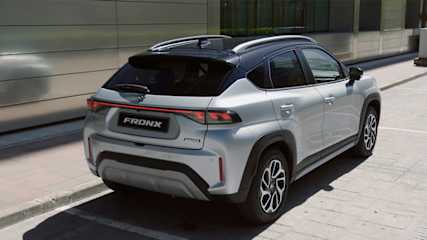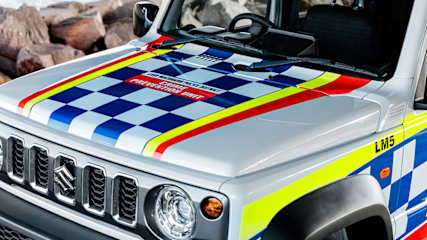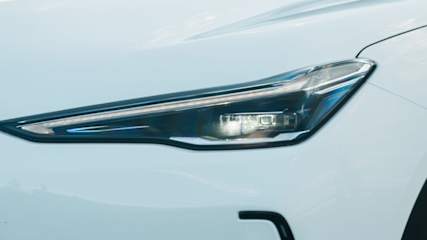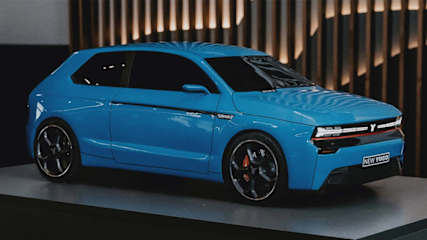A lack of ambition by 'legacy' car brands like Toyota and BMW will hand Chinese brands like BYD, Zeekr and GWM victory in Australia | Opinion
By Tom White · 15 Jun 2025
Chinese cars aren’t just about being the budget option anymore, and their ability to act fast, take risks and disregard the status quo is an existential threat to some of the world’s biggest manufacturers in Australia.I’ve increasingly had these thoughts as I’ve been driving ambitious new Chinese cars week-to-week against new offerings from their more established European, Japanese, and Korean rivals.It’s not as though these new offerings aren’t riddled with issues, some of them mundane and others extremely frustrating as you can read about in our recent reviews of cars like the Leapmotor C10, Geely EX-5, and Jaecoo J8. But outside the pricing and sheer speed to market, it’s the complete lack of fear to try something new which is making them stand out even in the most congested market segments.My favourite recent examples include Zeekr’s wild 009 performance people mover and the smaller but absurdly modular Mix, as well as the 7X electric mid-size SUV.There’s XPeng’s range of cars, from the surprisingly tidy G6, which has already arrived in Australia, alongside the soon-to-arrive G9 large SUV and Mona M03 sedan.Most recently there’s the wild GWM Tank 700, a $100k-plus twin-turbo V6 plug-in hybrid off-road monster clearly designed to rival some of the biggest names in the industry like G-Wagen, Defender and LandCruiser.That’s not to mention BYD’s mould-breaking Shark 6 plug-in hybrid ute, which has single-handedly upended the predominantly diesel segment and suddenly made heroes of the post-Falcon and Commodore era like the HiLux and D-Max look relatively antiquated.These new Chinese options have a lot in common. They have ambitious futuristic designs, feature-laden cabins with clever software features (albeit not all of them good) and a complete disregard for established industry norms.Performance people mover? Any other manufacturer would say a resounding ‘no’ to that, but Zeekr and XPeng both reckon they can simply create the hype for one out of thin air.Even just the concept of people movers in general. Toyota’s local division constantly dismisses the idea of bringing its luxurious Alphard to our market, despite the fact that it consistently ranks as Australia’s most popular grey import and sold in numbers orders of magnitude greater than the now-discontinued and diesel-only Granvia, which the brand offered as an also-ran alternative thanks to its parts commonality with the HiAce.Yet soon Australia will be again flooded with people mover offerings from the likes of BYD’s Denza brand as well as Xpeng and Zeekr, an existential threat to the Kia Carnival, which has remained largely unchallenged for the last few years.Even the entire concept of a Chinese semi-luxury brand like Jaecoo or Zeekr would have been scoffed at a handful of years ago, yet here they are, and not with one or two models, but fully-fledged line-ups.You can go even more granular than that. Recently I had a new Suzuki Swift ‘hybrid’ as a long-termer. It’s a sweet little car and technically ticks a lot of boxes for the intended buyer. The issue? It goes into battle against the new MG3.There’s a few problems with this. Firstly, the Suzuki feels like a facelift of the previous car, rather than a new-generation as claimed, and secondly, it’s not a ‘real hybrid’ in the sense that there’s no electric motor large enough to independently drive the wheels.In comparison, the MG launches with a clean-sheet, screen-centric interior (for better or worse), and an interesting dedicated hybrid transmission system with plenty of electric driving potential. Again, the MG is far from perfect, but it’s the relative ambition on show which could make or break a sale.Another example I drove recently was the Audi Q6 e-tron. It’s a great luxury mid-size electric SUV. The problem is, Volkswagen Group made a big song and dance about its brand-new PPE platform as though it was going to revolutionize the space, and the problem is the end product is just good when it needs to be stellar.In comparison, the Zeekr 7X I drove at the end of 2024 in China completely outgunned my expectations. It’s a similar offering; a ground-up new mid-size luxury electric SUV, but it brings a surprisingly plush interior (in some aspects, nicer than the Audi), with very clever software features, a coherent and innovative design and solid motor and battery specs.Zeekr was so confident we’d be impressed by it, they brought a current BMW X5 for us to test it against, and, to put it simply, the 7X felt much more a product of today. Plus it looks set to cost closer to $75k than the $100k of the base Q6.Now I'll stop at this point to add the caveat that just because these new offerings are ambitious - whether it's their design, price, market segment, or features - they're not always objectively better vehicles.The point is: at both ends of the price spectrum now, Chinese brands are putting the pressure on and tempting buyers away at a time where traditional brands can't afford to lose their audience.You don’t even need to take my word for it. It’s clear as day in the latest VFACTs figures for new car registrations in Australia.At the low end of the market, the squeeze is undeniable. The once-dominating Suzuki is down 19.8 per cent this year as it faces particular pressure from both MG and Chery, and cult hero SsangYong from Korea is taking a big hit as GWM and JAC muscle in on the territory of its humble Musso ute, the brand’s sales also dropping 27.6 per cent year-on-year.Even Mitsubishi is struggling to keep up, its affordable ASX now discontinued and new competition particularly fierce in the same segments as its core Triton ute and Outlander mid-sizer.BYD’s surge to the front of the EV charts has the once-dominant Tesla on the ropes for the first time, and it’s clear that some niche parts of the market are struggling to deal with the new car landscape, with Volvo down 21 per cent year-on-year and Jeep down 20.8 per cent.Granted it’s hard to attribute new Chinese players purely to these issues, with some ageing product no doubt to blame, but it’s worth pondering whether the lost volume will ever be recovered with so much competition tempting buyers away.Some traditional players are fairing better than others. Toyota is stable thanks to a steady stream of refreshed versions of its popular range of hybrids (although a question mark hangs above its ageing HiLux), while Kia and Hyundai take a different path, leaning into offering a diverse range of hybrids and electric cars with their own ambitious design allure.None of this will last. Despite a new range of ambitious products, even the once trailblazing MG is feeling a bit of heat, down 12.7 per cent this year as it tries to outgrow its cheap and cheerful phase, the mantle of which has been taken up by Chery.No doubt the same fate could await its contemporaries, as even more Chinese brands have designs on the Australian market - widely seen as a microcosm of other markets like the US and Europe - a perfect testbed for global expansion plans.Eventually the dust will settle, but how many automakers - new or old - will survive an increasingly intense race to 2030 seems impossible to tell.


.jpg)
.jpg)


.jpg)
.jpg)

.jpg)